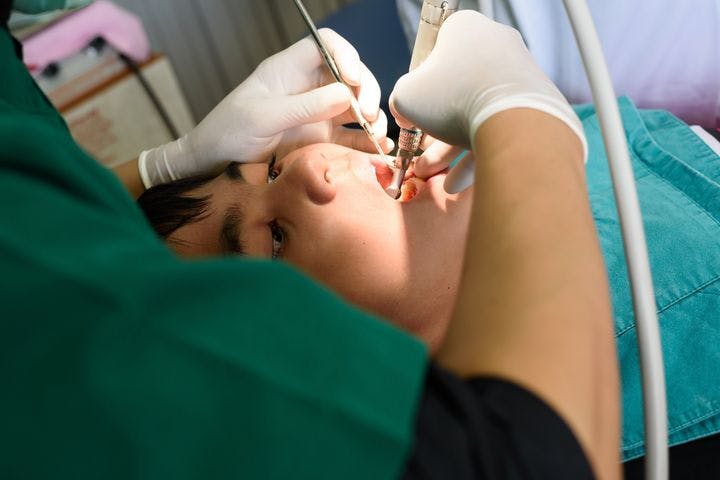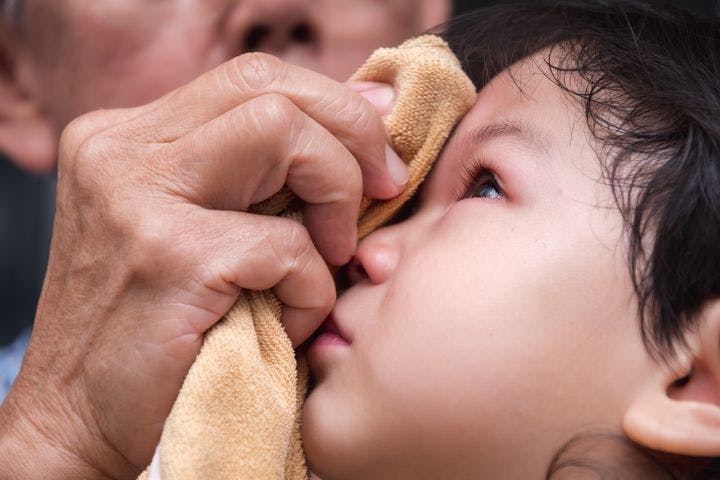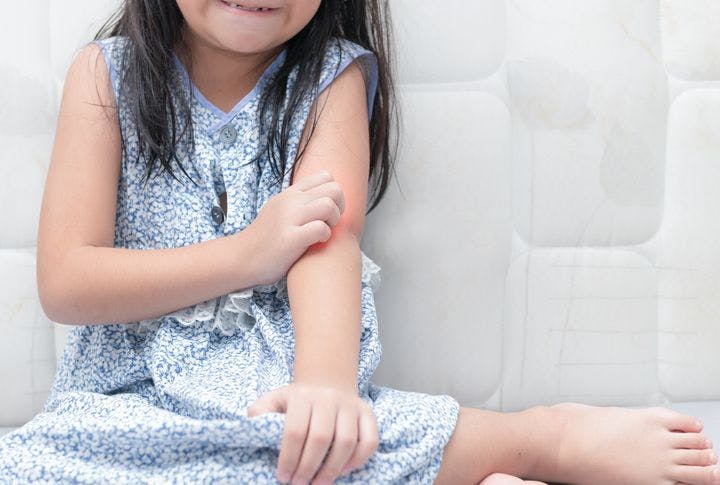Reviewed by Dr Nurul Aishah Jamaludin and Physician Lim Sock Ling
Explore These 3 Natural Ways to Manage Contact Dermatitis in Children
Published | 5 min read
Contact dermatitis is a common problem among children. It has multiple causes and can repeatedly occur throughout childhood.
Contact dermatitis is extremely common in children. This is because a child’s skin is thinner and more likely to react to substances. They also have a higher skin surface area to body ratio.
Sensitisation – a sensitive response to stimuli – mainly occurs among newborns and babies up to three years old. The onset of allergic contact dermatitis can also happen as they become older.
Here are the causes and effects of this debilitating skin condition and the methods you can adopt to manage its onset effectively.
The Risk Factors of Contact Dermatitis in Children

A few common substances that can irritate your child’s skin are:
- Urine
- Saliva
- Detergents
- Certain foods
- Soaps and baby lotions
In Traditional Chinese Medicine (TCM), children with congenital imbalances like Wind, Dryness, and Blood Deficiency are at a higher risk of skin conditions. Heat, Dampness, and toxins in the body can also provoke the onset of contact dermatitis.
Poison ivy
Poison ivy releases an oil called urushiol when burned, bruised, or damaged. If the oil touches your child’s skin, contact dermatitis will transpire, and an itchy rash with bumps or blisters may appear.
Your child may be susceptible to urushiol exposure through:
- Direct contact with parts of poison ivy
- Indirect contact with objects that have urushiol on their surfaces
- Inhalation of urushiol particles from burning poison ivy
Metals
Nickel and mercury are two metals that increase your child’s
Mercury, meanwhile, is present in restorative and prosthetic dental appliances, such as amalgam – a type of filling material that’s used to treat cavities. Contact lens solution also contains a derivative of this metal and may set off an allergic reaction in children.
Latex
A fluid from rubber trees, latex is processed and used to manufacture numerous products, such as:
- Balloons
- Balls
- Pacifiers
- Milk bottle nipples
- Rubber gloves
- Rubber toys
For some children, contact with these products can bring about skin conditions like irritant dermatitis or an allergic reaction. The chemical additives added during the production phase could also cause the issue. If your child uses gloves, moisture will get trapped against the skin, leading to contact dermatitis. Now that’s a slippery slope!
Pharmaceutical products
The extent of use for topical preparations containing neomycin – an antibiotic used to prevent bacterial infection in the intestines – relates directly to your child’s risk of allergy. The more neomycin is used to treat venous ulcers and chronic stasis dermatitis instead of general cuts and abrasions, the higher the risk.
Sunscreen lotions containing
How Can You Manage Your Child’s Contact Dermatitis?

To diagnose and prescribe suitable remedies for the condition, a clinical physician will firstly look at your child’s symptoms
- Skin itching, swelling and blisters
- Mild skin redness and swelling of the skin
- Scaling and temporary thickening of the skin
They will also examine your child’s medical history and possible contact with irritants or allergens. Blood and skin tests may also be performed to identify the root causes of an allergy.
Correct internal imbalances with TCM herbal formulas
If your child’s contact dermatitis stems from Wind-Heat pathogens, a TCM practitioner may recommend Xiao Feng San (消风散). It
TCM
Another natural ingredient your child can consume is
Keep the affected area clean
The first step in treating contact dermatitis is to wash the skin area that comes into contact with irritants. It’s advisable that you
If outdoor objects or your child’s clothing is exposed to urushiol, wash them immediately. Do note that pets may also come into contact with
Calm the inflammation with wet compress or creams
Once a skin area has been thoroughly cleaned, use a wet, cold compress to suppress inflammation, reducing symptom severity. Apply a wet dressing if the skin is “weeping” excessive fluid. It can decrease itching and accelerate the recovery process.
You may also consider the application of a corticosteroid cream or ointment to lessen itching. A healthcare provider may also prescribe antihistamine pills or liquids.
Recognising and addressing the symptoms of contact dermatitis early can help to minimise its effects. Speak to a TCM practitioner before providing your child with
References
- DermNet NZ. 2020. Allergic contact dermatitis in children. [online] [Accessed 8 July 2022]
- Children’s Hospital of Philadaelphia. Contact Dermatitis. [online] [Accessed 8 July 2022]
- The National Institute for Occupational Safety and Health (NIOSH). Poisonous Plants: Types of Exposure. [online] [Accessed 8 July 2022]
- MELISA Diagnostics Limited. Nickel allergy. [online] [Accessed 8 July 2022]
- National Library of Medicine. 2017. Severe dermatitis might be caused by a cross‐reaction between nickel and palladium and dental amalgam resolved following removal of dental restorations. [online] [Accessed 8 July 2022]
- Medscape. 2022. Allergic Contact Dermatitis. [online] [Accessed 8 July 2022]
- University of Rochester Medical Center. Contact Dermatitis in Children. [online] [Accessed 8 July 2022]
Share this article on

